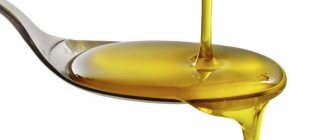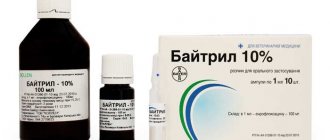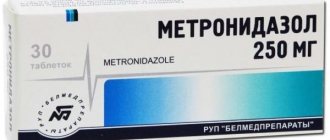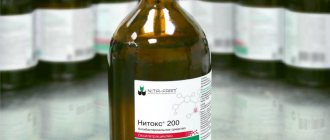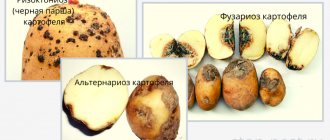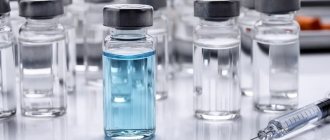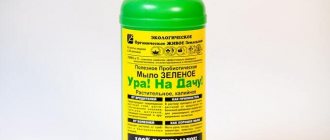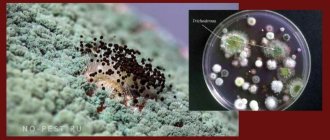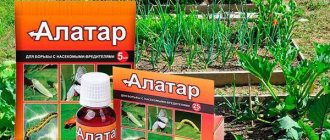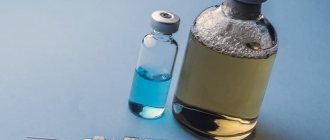Digestive system disorders and dermatitis are what beginning farmers often encounter when breeding poultry: chickens, turkeys, geese and other birds. Iodinol, an antiseptic drug that is popular due to its low price, effectiveness and ease of use, can solve the problem in a short time and cure the affected patients. Before using the product, you should carefully read the instructions and special instructions.
Description of the drug
Iodinol for birds is a medication with an antimicrobial effect, used in veterinary medicine to treat chickens and other birds. The drug is also called blue iodine. The medicine received this name because of its rich blue color.
The medicine is available in the form of a solution, the main element is iodine. In addition, the composition contains polyvinyl alcohol compounds and potassium iodide.
The drug has a pronounced iodine odor; when shaken, the drug forms foam. Sold in glass bottles, tightly closed with a rubber lid and cap.
Use of blue iodine for chickens
The use of this drug in veterinary medicine is as varied as in human treatment.
It is used for:
- Treatment of damaged skin;
- Elimination of iodine and potassium deficiency;
- Combat diarrhea and other digestive system disorders;
- As an antifungal and antibacterial agent.
This jelly is successfully combined with other remedies: antibiotics, wormwood, nettle, vitamins.
Properties
The main component of Iodinol is iodine crystals, so the drug has an antimicrobial effect without irritating mucous tissues. The main advantage of using the product for chickens and other birds is considered to be excellent tolerability even in birds weakened by the disease.
In addition, Iodinol is not a toxic drug and is excreted from the bird’s body naturally. The product contains no harmful or dangerous substances, hormones or antibiotics. When used, the medication does not accumulate in the organs, but, on the contrary, promotes the removal of toxins and waste.
Iodine checker
Iodine checker is a powder or tightly compressed tablets containing about 40% of the active substance and 60% of the auxiliary components necessary for normal combustion and release of iodine vapor.
Iodine checkers are used for the following purposes:
- Disinfection of premises for keeping chickens.
- Sanitation (improvement) of air in the chicken coop.
- Treatment of pulmonary (respiratory) infectious and non-infectious diseases.
This drug is used by laying out packages of powder or tablets at several points in the poultry house and setting it on fire using an ordinary household match. All doors and windows must be tightly closed, and any existing artificial forced ventilation must be turned off.
Before using the drug, its dose, as well as the duration of treatment of the poultry house with it, is selected from the instructions for use provided with each container of powder or tablets.
What is Iodinol used for?
Blue iodine is considered a first aid remedy for diseases of farm birds and is present in the first aid kit of almost every farmer. Iodinol for chickens and other birds is prescribed for the treatment of the following ailments:
- gastrointestinal diseases;
- skin diseases;
- stomatitis;
- purulent otitis;
- endometritis;
- vaginitis;
- coccidiosis and respiratory infections.
It is noteworthy that the product can be safely used to treat laying hens, since the drug is recognized as non-toxic and does not accumulate in meat and eggs.
Popular questions
Questions about watering laying hens arise not only among beginners who have just started farming. Experienced poultry farmers also try to constantly learn new things, and the variety of breeds of laying hens requires them to constantly be aware of all the secrets of their successful raising.
Read also: Hand drill for clay
How and what to feed chickens to prevent diseases?
Once a month, chickens can be given a pink solution of potassium permanganate. It is poured into drinking bowls for half a day, and then simply replaced with plain water. Potassium permanganate helps fight intestinal infections, disinfects, and kills viruses. The solution is suitable for the prevention of salmonellosis, which is also dangerous for humans.
To prevent infectious diseases, you can dissolve 1 tablet of Levomycetin in 5 liters of water: this solution is given once a quarter to avoid inflammatory diseases.
An excellent prevention of coccidiosis, a disease that can destroy the entire population of a poultry house within a few days, is a solution of copper sulfate: 3 tsp. copper sulfate per 1.5 liters of water. Pour it into drinking bowls for 3 days, a week later - another 1 course for three days. It is worth conducting 2-3 courses per year.
Multivitamins are necessary to increase the body's resistance to disease, improve egg production, and improve overall well-being. Any veterinary pharmacy will tell you which vitamins are best at what time. For every liter of water you need 1 ml of multivitamins. This solution is given once a month.
Is it possible to feed chickens with iodine and why is it necessary?
Not only people suffer from iodine deficiency; the lack of this substance seriously affects birds. Laying hens, especially if the egg is used not only for nutrition, but also for breeding, need iodine daily.
Back in 1979, breeding scientists calculated the amount required to produce full-fledged offspring: 0.5 mg per kilogram of bird weight. It has been proven that, first of all, the deficiency will affect the embryo; if the chick is born, it will be with deviations.
In dry fertilizers, potassium iodide and sodium iodide quickly evaporate or turn into substances that are not absorbed by the body. Therefore, it is much more effective to add iodine to water - up to 5 mg per liter of water (especially in areas with iodine deficiency).
What to give chickens for diarrhea?
Iodine will also help chickens get rid of intestinal upset - 2 drops for every liter of water, or potassium permanganate (potassium permanganate).
If several birds are swamped, it may be an infection that is dangerous for the entire flock. It is worth inviting a veterinarian, but specialists do not always arrive on time. Emergency measures may include medications:
- Ciprofloxacin or another antibiotic: 1 mg of a 10% solution is diluted in each liter of water and poured into drinking bowls or poured into 1 tsp. into the mouth of each laying hen.
- Furazolidone - 0.1 mg per 250 ml of water, this product can also be poured into drinking bowls or poured into the mouth of chickens.
- Aquaprim and Avidox are diluted in water according to the instructions and poured into drinking bowls.
After a course of treatment, you will definitely need a course of probiotics to restore microflora, vitamins to support a weakened body.
The veterinarian will tell you about this, as well as the causes of the disease and how to avoid relapse. A specialist must visit the farm to rule out infections that are highly contagious and dangerous to the livestock, or even people, and to carry out the necessary preventive measures to prevent the disease from returning.
What to feed chickens for better egg production?
Not only mixed feed helps improve egg production, but also the liquid that is given to laying hens. In addition to iodine and vitamins mentioned above, fish oil (2-3 grams per 1 liter of water), decoctions of nettle, birch leaves, pine needles, which are good to give instead of water 2-3 times a week in winter, can change the situation for the better. .
It is important to ensure that the required amount of vitamins and minerals enters the body with food and drink.
What to feed chickens against worms?
The water-soluble agent Levamisole (10% - 1 mg per glass of water) can be given to birds to prevent infection with worms. The solution is given for 3 days, then the course is repeated after 2-3 weeks.
Experienced owners who are prejudiced against medications steam 3 tablespoons per 1 liter of water. dry wormwood, boil over low heat for 10 minutes.
5 drops of the decoction are placed in the mouth of each laying hen, 2-3 is enough for chickens. This method is recommended to be applied once every quarter.
Birds need water no less than any other living creatures. It can become an indispensable assistant if it is necessary to administer a prophylactic agent or medicine to each bird in order to avoid outbreaks of infectious diseases in the poultry house. Drinking bowls must be treated with special disinfection solutions at least once a month, as they can become a source of infection.
Chickens also get sick - this is a well-established fact. Of course, there is a lot of information on various poultry diseases.
But it is much easier to know ways to prevent the development of diseases - for example, prevention of chickens in the spring allows you to get healthy offspring and high-quality eggs from them throughout the warm period of the year.
In specialized pharmacies you can purchase various drugs that, when fed to poultry, can protect the entire flock.
Product effectiveness
The high effectiveness of Iodinol for chickens and other birds is due to the following effects:
- Anti-inflammatory. The medication resists the development of inflammatory processes and slows down the spread of existing ones.
- Antiseptic. Disinfects wounds and other skin damage.
- Bactericidal. Since the product contains iodine, the medicine has a negative effect on pathogenic microorganisms.
- Immunostimulating . The use of Iodinol strengthens the immune system and reduces the likelihood of developing various diseases.
Instructions for use for birds
When using Iodinol to treat adult birds and young chicks, it is important to strictly follow the instructions and adhere to the dosage. When calculating the dosage, you need to take into account the age and weight of the bird, as well as the disease.
When treating skin problems, Iodinol is used undiluted. The swab is moistened in the medicine and the affected area, previously cleared of secretions, is treated.
To eliminate coccidiosis in turkey poults and other birds, Iodinol is mixed in water at a ratio of 1:0.5 and the prepared solution is offered to the birds. Duration of treatment: 7 days. The dose varies depending on the age of the affected individuals:
- chicks up to 1 month - 0.5 ml 3 times a day;
- mature chickens, turkeys and other types of poultry - 1 ml 3 times a day.
Pullorosis in young animals is eliminated according to the same scheme, the course of treatment is 8–10 days.
When using Iodinol to prevent diseases, the dosage is 0.3–0.5 ml once a day. The average duration of treatment is 15 days. Iodinol is especially beneficial in the autumn-winter period, when birds suffer from vitamin deficiency.
Treatment
This meat breed of chicken is characterized by rapid growth and large size, and therefore requires a special approach. Typically, meat breeds of all types of farm animals are characterized by poor health.
Such chickens need to be given increased amounts of vitamins, minerals and other drugs to save them from diseases. Iodine for broilers and its dosage are determined according to age and the risk of infection.
- Instead of homemade blue iodine, Yoddar and Amyloidine are often used.
- Yodadite is close in composition and action to ordinary blue iodine, but it has an enhanced antiseptic component, which makes it possible to use it for treating wounds, as well as internally in the fight against infectious diseases.
- To maintain the health of broilers, iodide is given to chickens starting at one week of age. It is recommended to use it daily, stopping several days before slaughter.
- Amyloiodine is a drug that provides a slow release of iodine atoms with a prolonged disinfectant effect.
Despite the fact that these drugs are often added to combined feeds, iodine in solution is much more effective. In addition, feeding chickens with a liquid substrate allows for better dosage control.
The best way to maintain dosage is to pour the solution into each chicken's beak individually. However, with a large population it is unrealistic to do this, so broilers are fed preparations with blue iodine at least once a week.
Early chickens are given drinking bowls with diluted blue iodine every day. This helps strengthen the immune system, reduces the risk of disease and even allows you to do without antibiotics under certain conditions.
For one week, the drinking bowls are filled with water with the addition of blue iodine, then they take a break for a week, then they start all over again.
The only exceptions to this regime are the threat of an epidemic, vitamin deficiency, pecking and other emergency situations that require the use of special drugs.
Blue iodine is a universal remedy that can be used for all warm-blooded animals. It is especially necessary to ensure the health of poultry, which often live in confined spaces, high density and without sunlight.
Makarov Ivan Vasilievich
Hereditary poultry farmer, owner of a poultry farm, graduated from St. Petersburg State Agrarian University with honors, author of articles in specialized publications
One of the simplest and most common modern medications for chickens is Iodinol. Having a simple composition and having many medicinal properties, it helps to effectively fight many diseases in poultry of different ages. At the same time, it also has such advantages as low cost, convenient release form, ease of dosage and use, and the possibility of self-production.
How to cook it yourself
For external use, it is not necessary to use purchased Iodinol - you can prepare the product yourself. Despite the fact that the properties of the homemade preparation are not inferior to its industrial counterpart, the shelf life of the homemade solution is much shorter. The mixture is suitable for consumption as long as it retains a rich, bright blue hue.
When preparing Iodinol yourself, for safety reasons, you must follow the recipe and observe the required proportions of ingredients.
Method 1
The method was developed by V. Mokhnach and is popular among poultry farmers due to its easy recipe. How to cook:
- Dilute 10 g of starch in 50 ml of water, mix and add 10 g of sugar and 0.4 g of citric acid. The mixture is stirred again.
- A thick mixture is boiled from the resulting solution. To do this, add the starch mixture to 150 ml of boiling water. The medicine is cooled and 1 teaspoon of 5% iodine solution is added and mixed. The mixture should take on a blue tint.
The finished product should be stored in a closed container.
Method 2
Another method of preparing Iodinol solution is similar to the first, with the exception of a couple of nuances:
- Add 10 g of starch and 1 teaspoon of 5% iodine solution to 50 ml of water and stir.
- Pour the starch-iodine mixture into 200 ml of boiling water, stirring constantly. The result should be blue Iodinol.
Preparation and storage
There are two methods for making blue iodine. The first method invented by V.O. Mokhnach gained great popularity. We recommend following this method. But the second recipe also has a number of its positive qualities, but is used many times less often.
It makes it possible to produce blue iodine with increased solubility properties, which makes the drug the safest - it will not damage the mucous membranes and stomach.
Method 1
You need to take 50 milliliters of water (temperature slightly above room temperature), add 10 grams of starch to it. Stir to avoid lumps and add a spoonful of sugar and a little lemon acid. Mix thoroughly.
Next, start boiling this solution in a saucepan, add 150 milliliters of water to it. In fact, you will have to prepare some semblance of jelly. The finished liquid should be cooled and a teaspoon of pharmaceutical iodine (5%) should be added to it. Mix thoroughly. The liquid will turn blue.
Sugar and citric acid are added to extend the life of the drug. The acid is a kind of preservative and prevents decomposition. Iodine made using this method will be stored for several months without losing its properties.
It is worth noting that it must be stored in a tightly closed container. The healing properties are maintained as long as the liquid has a deep blue color.
Method 2
You will need a 250 milliliter container, add 50 milliliters of cool water to it. Potato starch is diluted in water - 10 grams, a spoonful of pharmaceutical iodine is added.
Add 200 milliliters of boiling water to the solution. Pour in slowly, stirring thoroughly. The result will be a viscous solution. The drug can be stored in the refrigerator for no more than three weeks.
Side effects and contraindications
Veterinarians do not recommend using Iodinol for chickens and other types of poultry if they have:
- individual intolerance to any components of the drug;
- thyrotoxicosis;
- stool disorders;
- organ pathologies;
- tuberculosis.
When used correctly and following the instructions, Iodinol does not cause side effects. If the dosage is violated, birds may experience:
- rash;
- runny nose;
- bad feeling;
- burn of mucous membranes.
Iodinol poisoning leads to pulmonary edema, pneumonia and bronchospasm. If the dosage is violated, it is necessary to force the birds to drink milk and then rinse the stomach.
Recommendations from experienced poultry farmers
Experts who have repeatedly resorted to using blue iodine for birds adhere to several rules and also use their own tricks, which they willingly share with beginners:
- Every autumn, experienced poultry farmers recommend buying a block of Iodinol. It is used for disinfection if an epidemic develops. For an area of 250 m² the norm is 15 g. powder. It is placed on a clean fireproof surface (brick, sheet of dense iron) and set on fire. The result is a dark purple vapor. The room is cleaned before the procedure. If birds have respiratory diseases, it is recommended to leave them - the vapor they inhale quickly cures the disease.
- Despite the recommendations to feed broilers with the drug daily, it is necessary to take breaks. The best option is a week after a week.
- During periods of epidemic risk, in winter, blue iodine must be given to livestock to maintain immunity, even if they do not need it at first glance.
- In no case should antibiotics or potent drugs be given simultaneously with Iodinol. This may cause stomach upset.
- If the chicken does not lay eggs well, then Iodinol will come to the rescue again. The drug is administered 1 time in an amount of 0.5 ml. To obtain full-fledged offspring, 0.5 mg per kg of weight is recommended.
On a note. Iodinol is a universal and affordable medicinal product that is a godsend for poultry farmers, ensures the healthy condition of birds, and effectively disinfects.
Proper use of blue iodine is the key to success in the fight against diseases, wounds, and infections.
One of the simplest and most common modern medications for chickens is Iodinol. Having a simple composition and having many medicinal properties, it helps to effectively fight many diseases in poultry of different ages. At the same time, it also has such advantages as low cost, convenient release form, ease of dosage and use, and the possibility of self-production.
Precautionary measures
When working with medication, you should not forget about the following precautions:
- Before starting work, you must wash your hands with detergent and put on protective gloves.
- The solution should not be used for domestic purposes.
- After completing work, throw away the protective gloves and wash your hands.
- Do not allow the product to come into contact with exposed areas of the body, mucous membranes or eyes.
If during the preparation of the medicinal solution the drug gets into the eyes or onto the skin, you need to wash off the remaining product as quickly as possible, rinsing the affected area generously. After this, you should consult a doctor.
special instructions
Iodinol is recognized as a non-toxic drug, so the meat and eggs of birds using the medication can be eaten without fear. The main component of the drug quickly leaves the body without accumulating in tissues and organs.
The drug should be stored at a temperature not exceeding 25 ℃. Shelf life - 3 years. The diluted solution can be used within two days.
Iodinol is an effective remedy used to eliminate skin ailments and gastrointestinal diseases. The drug has high effectiveness, low price and is harmless to birds, so it can be used for chicks and laying hens.
What to feed chickens for prevention - review
To comply with the schedule of preventive measures, you need to hang a reminder directly in the poultry house.
Some chicken breeders set up a special corner for themselves in the premises where the birds are kept - there is a schedule of events and a notebook with notes on when and what was carried out.
Laying hens should be given water to prevent various diseases as follows:
- Once a month, all poultry should be soldered with the weakest possible solution of potassium manganese. This solution is left for half a day, then replaced with ordinary clean water.
- You need to dissolve 1 tablet of Levomycetin in five liters of water - such a weak antibiotic solution is given to the bird once a month with quarterly intervals. After drinking antibiotics, you should not eat poultry meat or eggs for 3 days.
Read also Peony health benefits and harms
- Dissolve copper sulfate (3 teaspoons) in one and a half liters of regular warm water. Chickens are fed this solution for three days in a row, then take a break and repeat the course. In this way, coccidiosis in chickens is prevented - a dangerous infectious disease that can destroy the entire population. You need to feed the bird with a solution of copper sulfate in courses of 3 days, a total of three such courses are required, and they will be useful for both chickens and adults.
- Dissolve 2 drops of iodine in a liter of warm water and give to the bird for 6 hours, then change to plain water. Iodine will prevent intestinal disorders and prevent diarrhea.
Prevention of salmonellosis in laying hens at home
Salmonellosis is a dangerous infectious disease that can be transmitted to humans. On large farms, poultry stock is periodically vaccinated - specially developed vaccines reliably protect chickens from the disease in question.
What to do on small farms, at home?
- Firstly, you need to feed the poultry once a month with a weak solution of potassium manganese - 6 hours of such a solution in the house is enough for prevention to take place.
- Secondly, in spring and autumn it is necessary to carry out complete disinfection of the room in which the poultry is kept. As a rule, this event is carried out using a special smoke bomb - they are sold in veterinary pharmacies. The saber is ignited indoors and left for 3-4 hours - during this time the smoke will rise up and, neutralizing all surfaces, will go down. Then you need to open all doors/windows and thoroughly ventilate the chicken coop. Chickens can return to their home after three hours of ventilation.
- Thirdly, salmonellosis can be prevented by regularly feeding birds with vitamin solutions - for this they use multivitamins that are added to water (1 ml per 1 liter of water). The schedule for drinking vitamin solution is once every 3-4 weeks.
Please note: many veterinary clinics offer chicken owners to vaccinate them against salmonellosis - you should not refuse, as this is considered the most effective method of prevention.
Prevention of worms in chickens
Chickens can be dewormed for prevention using a variety of drugs, but this must be done without fail.
The following recommendations should be followed:
- If the number of chickens is large, then you can use the drug Alvet. It is added to the feed of laying hens at the rate of 100 grams per 1 kg of mash. Prophylaxis with this drug should be carried out at least once a month.
- Levamisole-PLUS 10%, which is a water-soluble drug, can be added to drinking water. 1 ml per 0.25 liters of water is enough to prevent helminthiasis. The regularity of feeding chickens is three days in a row, then repeat the course after 2 weeks.
- To prevent helminthiases in chickens, there is also a folk remedy - 1 tablespoon of dried wormwood herb is poured into 400 ml of water and boiled for 15 minutes. After cooling and straining the broth, it is given once to both chickens and adult birds. 3 drops are instilled into each beak for young chickens and 5 drops for adult chickens (from 6 months). A one-time prophylaxis per quarter (three months) is sufficient.
VIDEO INSTRUCTIONS » alt=»»> Please note: if worm prevention is carried out in chickens, then for 4 days after the drugs are given to them, they should not eat poultry meat or eggs. And anthelmintic feeding of chickens should be carried out exactly from the moment it touches the ground/grass and the floor of the common chicken coop.
Prevention of chicken diseases is a necessary measure that will protect the entire livestock from death.
Iodinolum or molecular iodine is an antiseptic drug. It has the popular name “blue iodine” because of its specific color. In veterinary medicine it is used as a disinfectant. It is produced in the form of a solution, the main component of which is iodine. It is used as a treatment for skin infections and internal diseases of laying hens.
Tips for proper use include: description of the veterinary drug, area of its application, dosage and recipes for self-preparation. What is an iodine block and how to use it.
